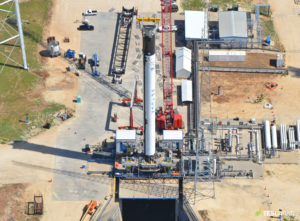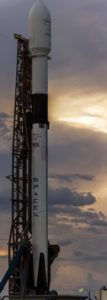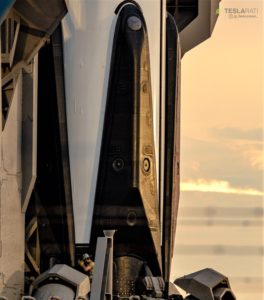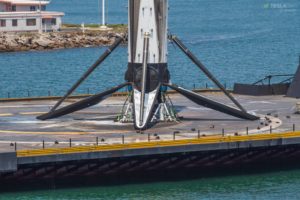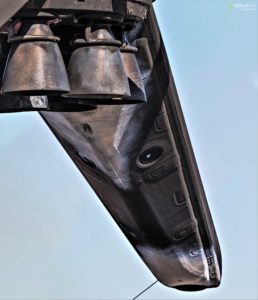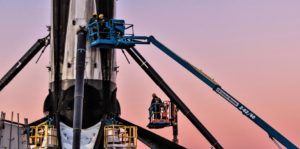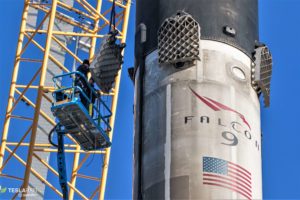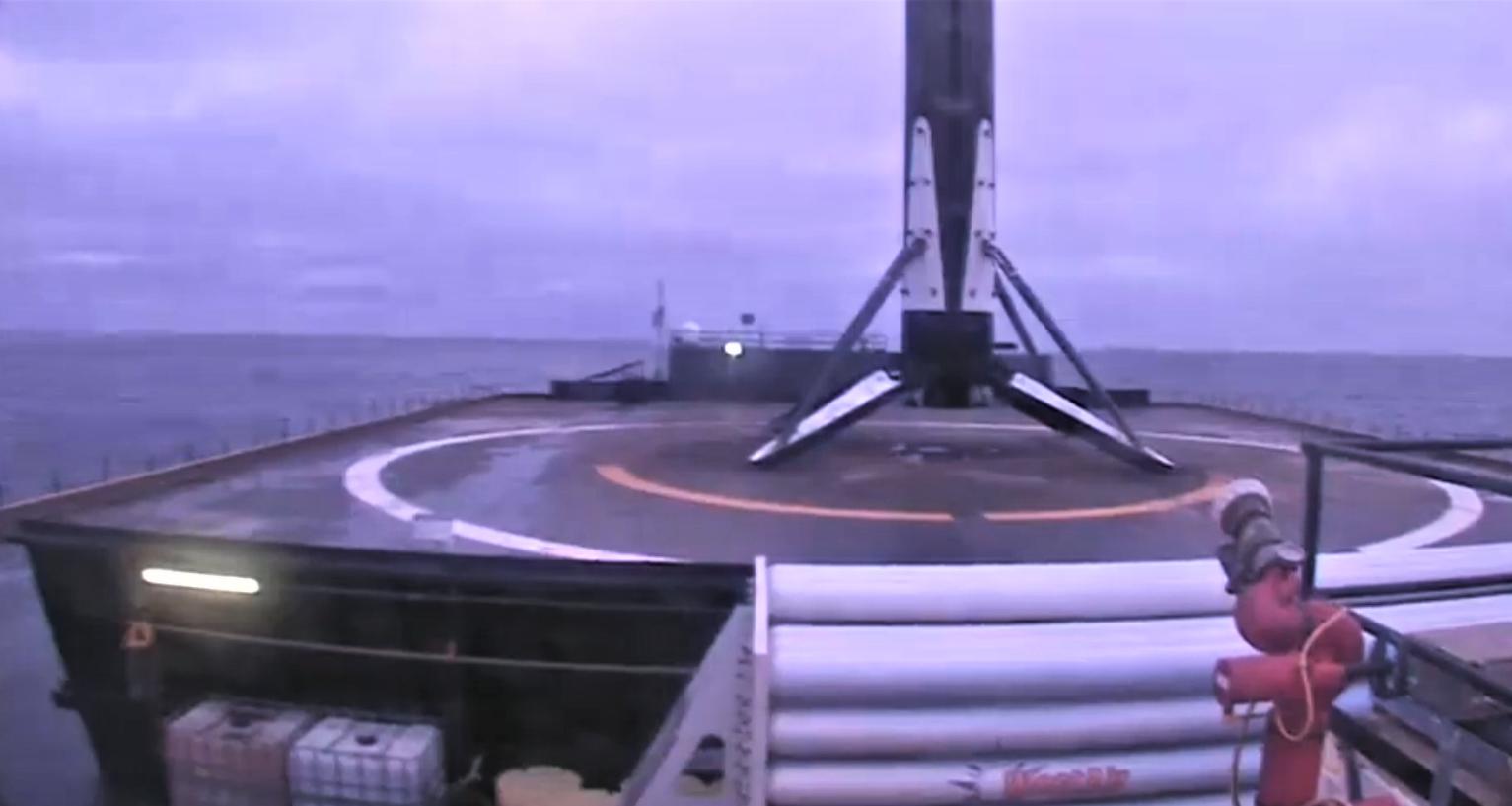
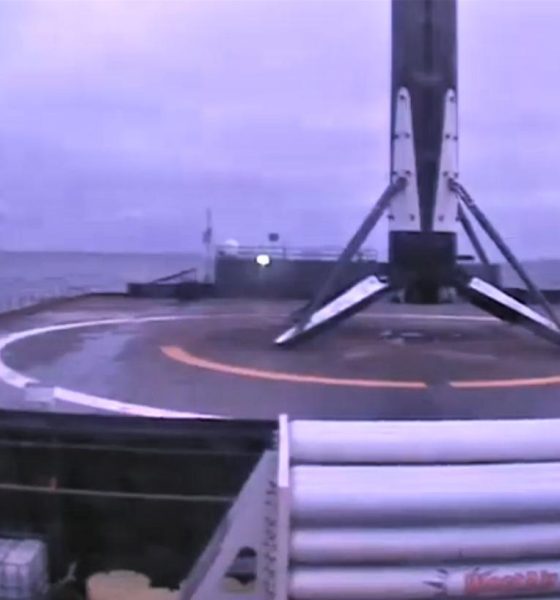
News
SpaceX’s first Falcon 9 landing of 2019 foreshadows rapid rocket fleet growth
Despite an unplanned landing anomaly that foiled SpaceX’s last Falcon 9 recovery attempt, the company’s engineers and technicians have pulled off another successful launch and landing of Falcon 9 – the 33rd for the rocket family – and the first of the new year.
After helping place Iridium’s 8th and final set of NEXT satellites into a parking orbit, Falcon 9 B1049 landed aboard drone ship Just Read The Instructions approximately 7 minutes after liftoff, marking the Block 5 booster’s second successful mission in just under four months. As of now, all but one of SpaceX’s flight-ready Falcon 9 boosters have now performed two or three orbital-class launches and are quickly becoming a truly reusable fleet of rockets.
Webcast of Falcon 9 launch to complete the @IridiumComm NEXT constellation is now live → https://t.co/gtC39uBC7z pic.twitter.com/lU3TwSeCbz
— SpaceX (@SpaceX) January 11, 2019
Throughout the second half of 2018, SpaceX gradually built, tested, launched, and relaunched a growing fleet of Falcon 9 Block 5 boosters, the first of which debuted in May. Including new boosters that have arrived at their launch pads but have yet to launch, SpaceX’s skilled production and testing team managed to ship, test, and deliver an impressive 1 to 1.5 Falcon 9 boosters, 1-2 upper stages, and 3-4 payload fairing halves on average each month. Thanks to Falcon 9 Block 5’s increasingly exceptional reusability, SpaceX does not have to outproduce other companies and national space programs to dramatically out-launch them, exemplifed by the fact that SpaceX alone was able to launch more orbital missions than the combined output of every company and country aside from China.
As more Falcon 9 and Falcon Heavy Block 5 booster are introduced into SpaceX’s growing fleet, the company’s many distinct advantages of direct and indirect competitors should come more and more into play and be increasingly difficult to avoid or ignore. As of today, a fairly incredible number of additional new Falcon boosters are already in their testing and delivery phases, a number that ignores the four (or five) flight-proven boosters and two unflown Falcons known to already be at or ready to ship to launch sites.
- SpaceX’s second Falcon 9 Block 5 booster was spied by an aerial photographer in Texas, April 17. (Aero Photo)
- Falcon 9 Block 5 will be absolutely critical to the success (and even the basic completion) of Starlink. (Tom Cross)
- The second Block 5 booster, B1047, debuted at LC-40 on July 21. (Tom Cross)
- SpaceX’s third Falcon 9 Block 5 booster successfully returned to Port of Los Angeles aboard drone ship Just Read The Instructions (JRTI) on July 27th. (Pauline Acalin)
- It’s unclear what exactly causes it, but Falcon 9 Block 5’s newly heat-shielded legs turn a rather bright white after being scorched during booster landings. (Pauline Acalin)
- Falcon 9 B1046.3. (Pauline Acalin)
- SpaceX technicians remove Falcon 9 B1046’s titanium grid fins after its historic third launch and landing, December 2018. (Teslarati – Pauline Acalin)
- Falcon 9 B1046 became the first SpaceX booster to launch three separate times in early-December 2018. (Pauline Acalin)
Just for Falcon Heavy’s second and third launches (NET March and April), SpaceX will deliver another two boosters (one side and one center) to Florida within the next ~6 weeks and will likely ship, test, and deliver another two or three new Falcon 9 boosters in the first half of 2019 for commercial missions and two crewed Crew Dragon launches scheduled for the second half of the year. Although Falcon Heavy’s new side boosters will likely remain side boosters for both of the rocket’s next missions, that should mean that they will be free enter the single-stick Falcon 9 fleet sometime in H2 2019, as will the three new boosters assigned to Crew Dragon this year. Falcon Heavy’s center core will remain dedicated to Falcon Heavy launches as a result of the extensive modifications necessary to support triple the thrust of a normal Falcon 9.
Regardless, this ultimately means that SpaceX’s reusable Falcon fleet could feature as many as 12-15 boosters capable of something like 5-10 additional launches each by the second half of fourth quarter of 2019. At that point, SpaceX might have enough experience with Block 5 and enough flight-proven boosters to plausibly begin a revolutionary shift in how commercial launches are done. With far more boosters available than SpaceX has payloads to launch, multiple flight-ready Block 5 rockets will inevitably stack up at or around the company’s three launch pads and surrounding integration and refurbishment facilities.
Liftoff of Iridium-8 from Vandenberg AFB. Gorgeous morning to end a beautiful launch campaign. 🚀 pic.twitter.com/RZPRRV9i5t
— Pauline Acalin (@w00ki33) January 11, 2019
Instead of the current process of launch where boosters are dedicated to certain missions in fairly iron-clad terms, SpaceX could conceivably treat its launch services as actual services, meaning that – aside from requests for unflown hardware or customer-specific standards (i.e. USAF/NASA/NRO) – the specifics of booster assignments would be no more of a worry to customers than the cargo plane goods are delivered with matters to 99% of logistics customers. A plane is typically a plane regardless of whether it has flown for 10 hours or 10,000 hours. That sort of interchangeability and hands-off approach to customers is likely at least 12 months off, if not longer (old habits die hard), but a fleet of a dozen or more flight-ready rockets is truly a brave new world for commercial spaceflight and even spaceflight in general.
For prompt updates, on-the-ground perspectives, and unique glimpses of SpaceX’s rocket recovery fleet check out our brand new LaunchPad and LandingZone newsletters!

News
Tesla hints at Starlink integration with recent patent
“By employing polymer blends, some examples enable RF transmission from all the modules to satellites and other communication devices both inside and outside the vehicle.”

Tesla hinted at a potential Starlink internet terminal integration within its vehicles in a recent patent, which describes a vehicle roof assembly with integrated radio frequency (RF) transparency.
The patent, which is Pub. No U.S. 2025/0368267 describes a new vehicle roof that is made of RF-transparent polymer materials, allowing and “facilitating clear communication with external devices and satellites.”
Tesla believes that a new vehicle roof design, comprised of different materials than the standard metallic or glass elements used in cars today, would allow the company to integrate modern vehicular technologies, “particularly those requiring radio frequency transmission and reception.
Tesla has recently filed a US patent application on integrating RF transparent materials into the roof structure.
“facilitating clear communication with external devices and satellites”
Tesla fleet is getting @Starlink connectivity integration soon. LFG @Tesla @elonmusk… pic.twitter.com/bLa8YtPLd1
— Chansoo Byeon (@Chansoo) December 9, 2025
Instead of glass or metallic materials, Tesla says vehicles may benefit from high-strength polymer blends, such as Polycarbonate, Acrylonitrile Butadiene Styrene, or Acrylonitrile Styrene Acrylate.
These materials still provide ideal strength metrics for crashworthiness, stiffness for noise, vibration, and harshness control, and are compliant with head impact regulations.
They would also enable better performance with modern technologies, like internet terminals, which need an uninterrupted signal to satellites for maximum reception. Tesla writes in the patent:
“By employing polymer blends, some examples enable RF transmission from all the modules to satellites and other communication devices both inside and outside the vehicle.”

One of the challenges Tesla seems to be aware of with this type of roof design is the fact that it will still have to enable safety and keep that at the forefront of the design. As you can see in the illustration above, Tesla plans to use four layers to increase safety and rigidity, while also combating noise and vibration.
It notes in the patent that disclosed examples still meet the safety requirements outlined in the Federal Motor Vehicle Safety Standards (FMVSS).
Starlink integrated directly into Tesla vehicles would be a considerable advantage for owners. It would come with a handful of distinct advantages.
Initially, the inclusion of Starlink would completely eliminate cellular dead zones, something that is an issue, especially in rural areas. Starlink would provide connectivity in these remote regions and would ensure uninterrupted service during road trips and off-grid adventures.
It could also be a critical addition for Robotaxi, as it is crucial to have solid and reliable connectivity for remote monitoring and fleet management.
Starlink’s growing constellation, thanks to SpaceX’s routine and frequent launch schedule, will provide secure, stable, and reliable internet connectivity for Tesla vehicles.
Although many owners have already mounted Starlink Mini dishes under their glass roofs for a similar experience, it may be integrated directly into Teslas in the coming years, either as an upgrade or a standard feature.
News
Tesla supplements Holiday Update by sneaking in new Full Self-Driving version
It seems Tesla was waiting for the Hardware 4 rollout, as it wanted to also deploy a new Full Self-Driving version to those owners, as it appeared in the release notes for the Holiday Update last night.

Tesla has surprised some owners by sneaking in a new Full Self-Driving version with the wide release of the Holiday Update, which started rolling out to Hardware 4 owners on Friday night.
Tesla has issued a controlled and very slow release pattern with the Holiday Update, which rolls out with Software Version 2025.44.25.5.
For the past two weeks, as it has rolled out to Hardware 3 and older Tesla owners, the company has kept its deployment of the new Software Version relatively controlled.
It seems Tesla was waiting for the Hardware 4 rollout, as it wanted to also deploy a new Full Self-Driving version to those owners, as it appeared in the release notes for the Holiday Update last night.
Tesla Full Self-Driving v14.2.1.25 made its first appearance last night to Hardware 4 owners who are members of the Early Access Program (EAP). It appears to be a slight refinement from FSD v14.2.1, which has been out for a couple of weeks.
Tesla v2025.44.25.5 Holiday update incoming
Also Full Self-Driving v14.2.1.25!!! pic.twitter.com/74D7S0UGXz
— TESLARATI (@Teslarati) December 13, 2025
Many owners welcome the new FSD version, us included, because we’ve been less than impressed with v14.2.1. We have experienced some minor regressions with v14.2.1, especially with Speed Limit recognition, Speed Profile tinkering, and parking performance.
As it stands, Full Self-Driving is still particularly impressive, but Tesla is evidently having an issue with some of the adjustments, as it is still refining some of the performance aspects of the suite. This is expected and normal with some updates, as not all of them are an improvement in all areas; we routinely see some things backtrack every once in a while.
This new FSD version is likely to take care of those things, but it also includes all of the awesome Holiday Update features, which include:
- Grok with Navigation Commands (Beta) – Grok will now add and edit destinations.
- Tesla Photobooth – Take pictures inside your car using the cabin-facing camera
- Dog Mode Live Activity – Check on your four-legged friend on your phone through periodic snapshots taken of the cabin
- Dashcam Viewer Update – Includes new metrics, like steering wheel angle, speed, and more
- Santa Mode – New graphics, trees, and a lock chime
- Light Show Update – Addition of Jingle Rush light show
- Custom Wraps and License Plates – Colorizer now allows you to customize your vehicle even further, with custom patterns, license plates, and tint
- Navigation Improvements – Easier layout and setup
- Supercharger Site Map – Starting at 18 pilot locations, a 3D view of the Supercharger you’re visiting will be available
- Automatic Carpool Lane Routing – Navigation will utilize carpool lanes if enabled
- Phone Left Behind Chime – Your car will now tell you if you left a phone inside
- Charge Limit Per Location – Set a charge limit for each location
- ISS Docking Simulator – New game
- Additional Improvements – Turn off wireless charging pad, Spotify improvements, Rainbow Rave Cave, Lock Sound TRON addition
Tesla also added two other things that were undocumented, like Charging Passport and information on USB drive storage to help with Dashcam.
Cybertruck
Tesla updates Cybertruck owners about key Powershare feature

Tesla is updating Cybertruck owners on its timeline of a massive feature that has yet to ship: Powershare with Powerwall.
Powershare is a bidirectional charging feature exclusive to Cybertruck, which allows the vehicle’s battery to act as a portable power source for homes, appliances, tools, other EVs, and more. It was announced in late 2023 as part of Tesla’s push into vehicle-to-everything energy sharing, and acting as a giant portable charger is the main advantage, as it can provide backup power during outages.
Cybertruck’s Powershare system supports both vehicle-to-load (V2L) and vehicle-to-home (V2H), making it flexible and well-rounded for a variety of applications.
However, even though the feature was promised with Cybertruck, it has yet to be shipped to vehicles. Tesla communicated with owners through email recently regarding Powershare with Powerwall, which essentially has the pickup act as an extended battery.
Powerwall discharge would be prioritized before tapping into the truck’s larger pack.
However, Tesla is still working on getting the feature out to owners, an email said:
“We’re writing to let you know that the Powershare with Powerwall feature is still in development and is now scheduled for release in mid-2026.
This new release date gives us additional time to design and test this feature, ensuring its ability to communicate and optimize energy sharing between your vehicle and many configurations and generations of Powerwall. We are also using this time to develop additional Powershare features that will help us continue to accelerate the world’s transition to sustainable energy.”
Owners have expressed some real disappointment in Tesla’s continuous delays in releasing the feature, as it was expected to be released by late 2024, but now has been pushed back several times to mid-2026, according to the email.
Foundation Series Cybertruck buyers paid extra, expecting the feature to be rolled out with their vehicle upon pickup.
Cybertruck’s Lead Engineer, Wes Morrill, even commented on the holdup:
As a Cybertruck owner who also has Powerwall, I empathize with the disappointed comments.
To their credit, the team has delivered powershare functionality to Cybertruck customers who otherwise have no backup with development of the powershare gateway. As well as those with solar…
— Wes (@wmorrill3) December 12, 2025
He said that “it turned out to be much harder than anticipated to make powershare work seamlessly with existing Powerwalls through existing wall connectors. Two grid-forming devices need to negotiate who will form and who will follow, depending on the state of charge of each, and they need to do this without a network and through multiple generations of hardware, and test and validate this process through rigorous certifications to ensure grid safety.”
It’s nice to see the transparency, but it is justified for some Cybertruck owners to feel like they’ve been bait-and-switched.
